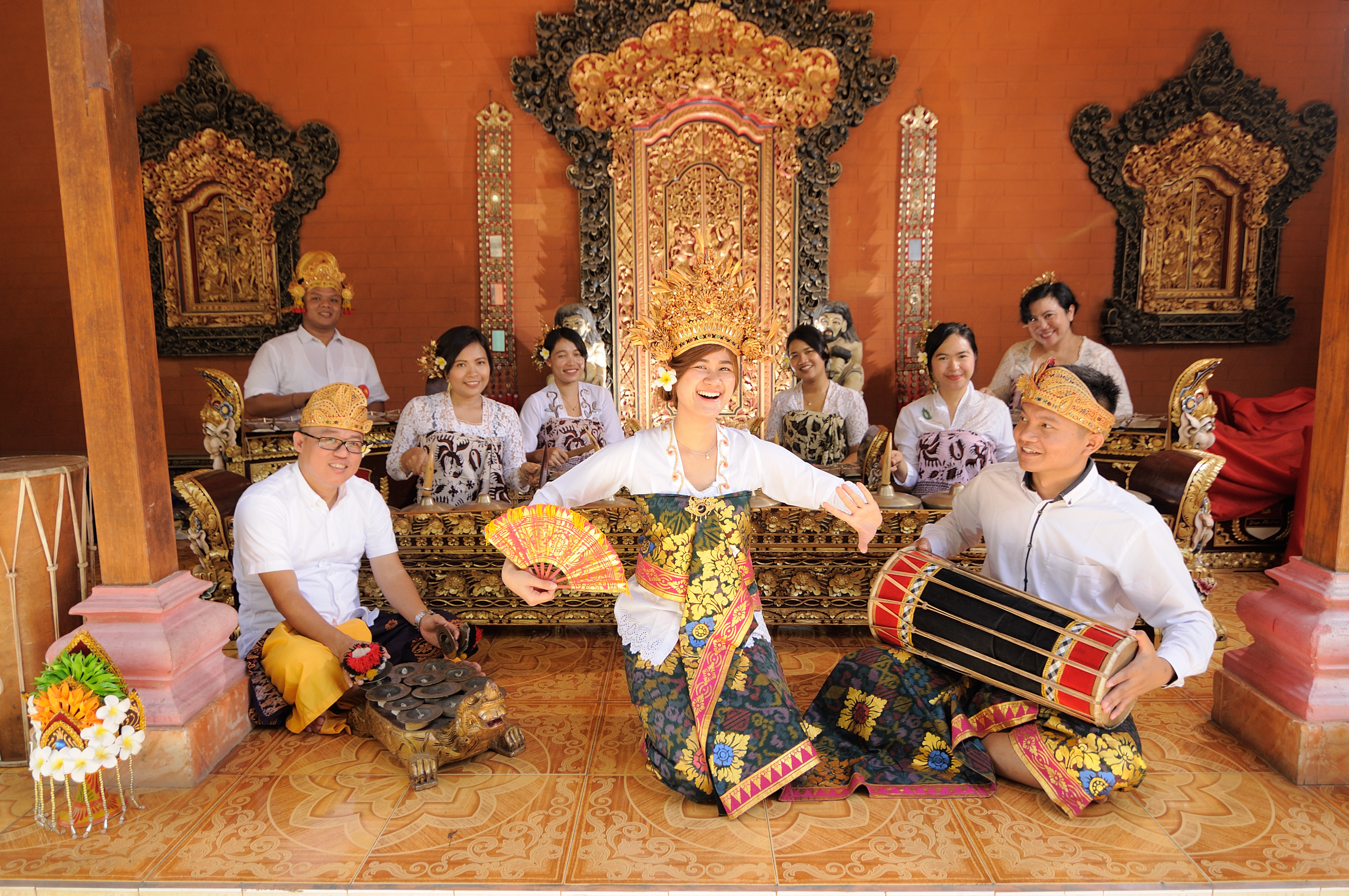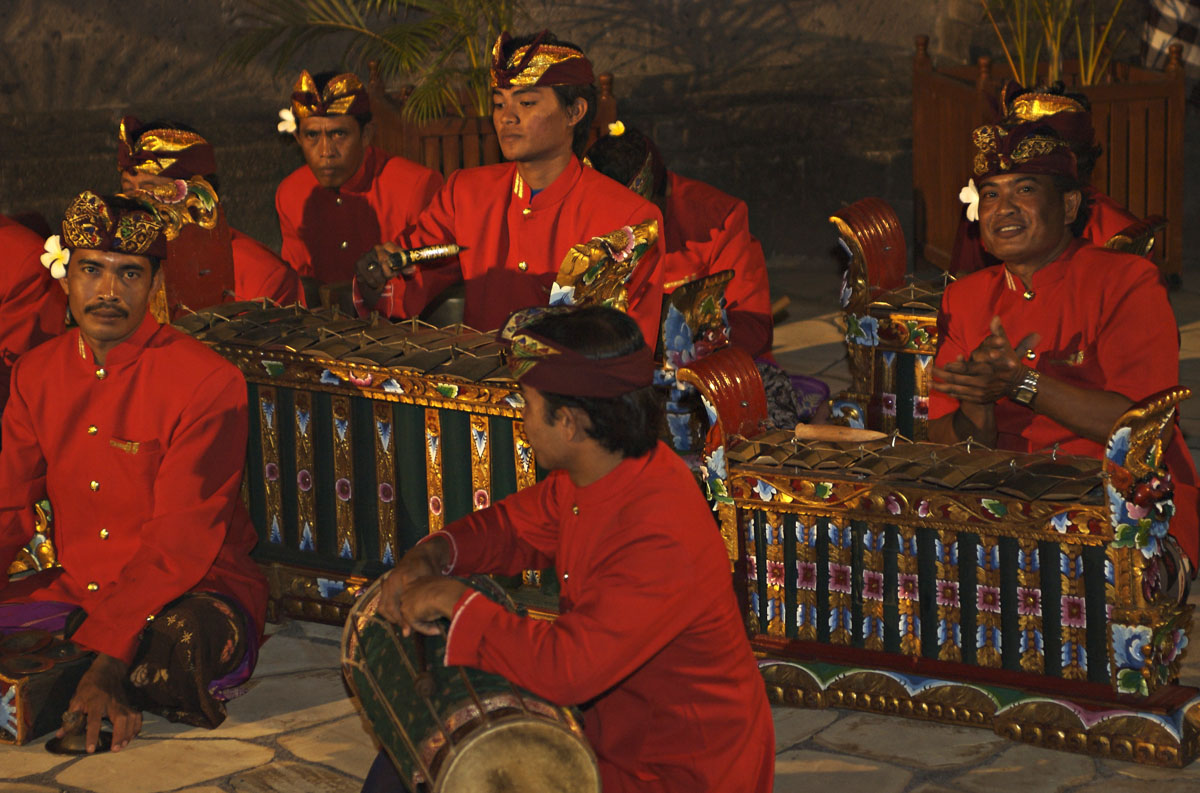Music of Bali on:
[Wikipedia]
[Google]
[Amazon]
 The Music of Bali,
The Music of Bali,

 More than 50 people must be dancing during the music.
Balinese music can be compared to Javanese music, especially that of the pre-
More than 50 people must be dancing during the music.
Balinese music can be compared to Javanese music, especially that of the pre-
Encyclopedia.com
*''Gamelan Gong Kebyar: The Art of Twentieth-Century Balinese Music'' (2000) by Michael Tenzer, and {{ISBN, 0-226-79283-8.
by Michael Tenzer
Triguna: A Hindu-Balinese Philosophy for Gamelan Gong Gede Music
by Made Mantle Hood
 The Music of Bali,
The Music of Bali, Bali
Bali () is a province of Indonesia and the westernmost of the Lesser Sunda Islands. East of Java and west of Lombok, the province includes the island of Bali and a few smaller neighbouring islands, notably Nusa Penida, Nusa Lembongan, and ...
is an Indonesian island that shares in the gamelan
Gamelan () ( jv, ꦒꦩꦼꦭꦤ꧀, su, ᮌᮙᮨᮜᮔ᮪, ban, ᬕᬫᭂᬮᬦ᭄) is the traditional ensemble music of the Javanese, Sundanese, and Balinese peoples of Indonesia, made up predominantly of percussive instruments. T ...
and other Indonesian musical styles. Bali, however, has its own techniques and styles, including kecak
''Kecak'' (pronounced ("kechak"), alternate spellings: ''kechak'' and ''ketjak''), known in Indonesian as ''tari kecakilolahhe'', is a form of Balinese Hindu dance and music drama that was developed in the 1930s in Bali, Indonesia. Since i ...
, a form of singing that imitates the sound of monkey
Monkey is a common name that may refer to most mammals of the infraorder Simiiformes, also known as the simians. Traditionally, all animals in the group now known as simians are counted as monkeys except the apes, which constitutes an incomple ...
s. In addition, the island is home to several unique kinds of gamelan, including the gamelan jegog, gamelan gong gede, gamelan gambang, gamelan selunding and gamelan semar pegulingan
Gamelan semar pegulingan is an old variety of the Balinese gamelan. Dating back from around the 17th century, the style is sweeter and more reserved than the more popular and progressive Gamelan Gong Kebyar. Semar pegulingan is derived from th ...
, the cremation music angklung
The ( Sundanese: ) is a musical instrument from the Sundanese people in Indonesia made of a varying number of bamboo tubes attached to a bamboo frame. The tubes are carved to have a resonant pitch when struck and are tuned to octaves, similar ...
and the processional music bebonangan. Modern popular styles include gamelan gong kebyar, dance music
Dance music is music composed specifically to facilitate or accompany dancing. It can be either a whole musical piece or part of a larger musical arrangement. In terms of performance, the major categories are live dance music and recorded da ...
which developed during the Dutch occupation and 1950s era joged bumbung
Joged bumbung is a style of gamelan music from Bali, Indonesia on instruments made primarily out of bamboo. The ensemble gets its name from joged, a flirtatious dance often performed at festivals and parties. This style of Gamelan is especially ...
, another popular dance style. In Balinese music you can also hear metallophones, gongs and xylophones.
Characteristics

 More than 50 people must be dancing during the music.
Balinese music can be compared to Javanese music, especially that of the pre-
More than 50 people must be dancing during the music.
Balinese music can be compared to Javanese music, especially that of the pre-Islam
Islam (; ar, ۘالِإسلَام, , ) is an Abrahamic monotheistic religion centred primarily around the Quran, a religious text considered by Muslims to be the direct word of God (or '' Allah'') as it was revealed to Muhammad, the ...
ic period. During that time, Javanese tonal systems were imported to Bali.
Balinese gamelan
Gamelan () ( jv, ꦒꦩꦼꦭꦤ꧀, su, ᮌᮙᮨᮜᮔ᮪, ban, ᬕᬫᭂᬮᬦ᭄) is the traditional ensemble music of the Javanese, Sundanese, and Balinese peoples of Indonesia, made up predominantly of percussive instruments. T ...
, a form of Indonesian classical music
Indonesian is anything of, from, or related to Indonesia, an archipelagic country in Southeast Asia. It may refer to:
* Indonesians, citizens of Indonesia
** Native Indonesians, diverse groups of local inhabitants of the archipelago
** Indonesi ...
, is louder, swifter and more aggressive than Sundanese and Javanese music. Balinese gamelan also features more archaic instrumentation than modern Sundanese and Javanese gamelans. Balinese instruments include bronze
Bronze is an alloy consisting primarily of copper, commonly with about 12–12.5% tin and often with the addition of other metals (including aluminium, manganese, nickel, or zinc) and sometimes non-metals, such as phosphorus, or metalloids suc ...
and bamboo
Bamboos are a diverse group of evergreen perennial flowering plants making up the subfamily Bambusoideae of the grass family Poaceae. Giant bamboos are the largest members of the grass family. The origin of the word "bamboo" is uncertain, ...
xylophone
The xylophone (; ) is a musical instrument in the percussion family that consists of wooden bars struck by mallets. Like the glockenspiel (which uses metal bars), the xylophone essentially consists of a set of tuned wooden keys arranged in ...
s. Gong
A gongFrom Indonesian and ms, gong; jv, ꦒꦺꦴꦁ ; zh, c=鑼, p=luó; ja, , dora; km, គង ; th, ฆ้อง ; vi, cồng chiêng; as, কাঁহ is a percussion instrument originating in East Asia and Southeast Asia. Gongs ...
s and a number of gong chime
A gong chime is a generic term for a set of small, high-pitched bossed pot gongs. The gongs are ordinarily placed in order of pitch, with the boss upward on cords held in a low wooden frame. The frames can be rectangular or circular (the latter ar ...
s, are used, such as the solo instrument trompong, and a variety of percussion instrument
A percussion instrument is a musical instrument that is sounded by being struck or scraped by a beater including attached or enclosed beaters or rattles struck, scraped or rubbed by hand or struck against another similar instrument. Exc ...
s like cymbal
A cymbal is a common percussion instrument. Often used in pairs, cymbals consist of thin, normally round plates of various alloys. The majority of cymbals are of indefinite pitch, although small disc-shaped cymbals based on ancient designs soun ...
s, bell
A bell is a directly struck idiophone percussion instrument. Most bells have the shape of a hollow cup that when struck vibrates in a single strong strike tone, with its sides forming an efficient resonator. The strike may be made by an inte ...
s, drums
A drum kit (also called a drum set, trap set, or simply drums) is a collection of drums, cymbals, and other auxiliary percussion instruments set up to be played by one person. The player (drummer) typically holds a pair of matching drumsticks ...
and the anklung (a bamboo rattle). There are two sizes of bamboo flute
The flute is a family of classical music instrument in the woodwind group. Like all woodwinds, flutes are aerophones, meaning they make sound by vibrating a column of air. However, unlike woodwind instruments with reeds, a flute is a reedles ...
s, both used in theatrical music, and a rebab
The ''rebab'' ( ar, ربابة, ''rabāba'', variously spelled ''rebap'', ''rubob'', ''rebeb'', ''rababa'', ''rabeba'', ''robab'', ''rubab'', ''rebob'', etc) is the name of several related string instruments that independently spread via I ...
(two-stringed spike fiddle).
Modern forms of Balinese gamelan include kebyar, an energetic style played by clubs, which generally compose their own music. An extensive study of gamelan gong kebyar is found in ''Gamelan Gong Kebyar: The Art of Twentieth-Century Balinese Music'' (2000) by Michael Tenzer
Michael Tenzer (born 1957) is a composer, performer, and music educator and scholar.
Tenzer was born in New York City and studied music at Yale University (BA. 1978) and University of California, Berkeley (Ph.D. 1986). After teaching at Yale fro ...
, and .
See also
* Music of Indonesia * Music of Java *Music of Sumatra
The Music of Sumatra, Sumatra is a part of Indonesia; its best-known musical output is probably dangdut, a rabab/ saluang instrumental style.
The Sumatran Toba people are distinctive in their use of tuned drums to carry the melody in their mus ...
References
Encyclopedia.com
*''Gamelan Gong Kebyar: The Art of Twentieth-Century Balinese Music'' (2000) by Michael Tenzer, and {{ISBN, 0-226-79283-8.
External links
by Michael Tenzer
Triguna: A Hindu-Balinese Philosophy for Gamelan Gong Gede Music
by Made Mantle Hood